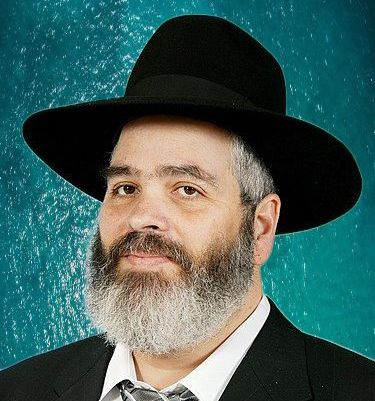  |
|
| |||||
An Article about the Martyrdom of the Jews of York Aroused Anti-semitism Degrading and disparaging reactions followed an article printed in England telling the tragic story of the Jews of York HY"D, who were slaughtered over 800 years ago. Authored by Arthur McQuin who specializes in chapters of English history, it told of 150 Jews who were murdered in the Clifford Tower of York. Instead of expressing identification and empathy, many of the critics reacted with smirks and non-complimentary remarks. The event of the York massacre is one of the darkest episodes in the annals of British Jewry of medieval times. The event, which took place in the Clifford tower in the city of York, left a deep mark on Jewish history of England and is said to be the worst act of anti-Semitic violence of that period. Rabbi Yosef of Carters authored a dirge, kinah, which begins, "Elokim, masters aside from You, have enslaved us."
Standing on the threshold of the bein hazmanim, HaRav Shlomo begins his address thus: It is clear that we require advance planning. If we arrive at these days without preparation, without understanding their nature and their purpose, we are likely to miss out on their countless opportunities and lose the diamonds that they offer. Needless to say, these days, presenting an exit from the normal routine, are liable to forfeit their purpose and lead, chas vesholom, to a decline instead of an ascent. Maran, the Steipler, used to ask: Given that one feels that he needs respite and quiet so that he can continue to apply himself all the better to his future study, what is the difference between the period of those days within the study session and the bein hazmanim intersession? If indeed, one feels the need to refresh himself during the routine days, were it advisable that he plod on nonetheless without progress or taking a break to recharge? Surely no! One who feels he must rest, whether it be during the regular period of study or during the intersession, must find the time to do so, so that he continue afterwards to resume his study invigorated.
The renowned writer, R' Moshe Sheinfeld, who received full support from the Torah leaders of his time for his articles in the Niv Hamoreh publication as being suffused with a true Torah outlook, wrote the following for the Kislev 5733 edition: It was titled, "Violence is a Foreign Branch in our Education": "To the great extent which our Torah-oriented society has invested in creating spiritual walls which would set us apart from the secular errant public, nevertheless, there are breaches in those fortresses which affect the tender saplings of our youth. G-d forbid that we regard them, ostrich-like, and ignore the signs of violence which are infiltrating us and capturing the Jewish youth from the streets. Whoever shrugs away such signs and comforts himself saying, 'Let the youths play before us,' is blinding himself from seeing how terrible will be the ramifications, and how murky will be the waters and wells which these spurt forth.
29 Adar marks the thirty-ninth anniversary of the passing of one of the gedolim of America: HaRav Yaakov Kamenetsky. In this important article, Rav Yosef Elias brings together several major themes that HaRav Yaakov developed, to teach some very important lessons about Chumash and education. The ideas and issues that are clarified here are matters of daily contact for anyone who has an ongoing relationship to Torah, and the lessons of Reb Yaakov will certainly have a profound effect on this relationship. This interesting important essay was originally published in 1996, 29 years ago. It emphasized and summarizes some of the central ideas of HaRav Yaakov Kamenetsky zt"l. Last week we discussed: Seeking Guidance from Chumash; The Growing Need for a Growing Understanding; Why Yaakov Ovinu send real Mal'ochim to Eisov, and more. Part II Going Down From Sinai The giving of the Torah at Sinai obviously was the most crucial moment in the history of the Jewish people. As we are further and further removed from that event, our connection to it is weakened and hence, too, our spiritual level. Thus the decline of the generations: "If the earlier personalities were like angels, we are like humans; if they were humans, we are like donkeys — and not even like the donkeys of Rabbi Pinchos ben Ya'ir," of whom the gemora talks (Shabbos 112). I (Rabbi Elias) once addressed a teacher's conference on the lessons that we can convey to our students from Jewish history. The Rosh Yeshiva was present and after I had listed a number of points, he commented that I had omitted the most important one: the decline of the generations. The Rosh Yeshiva stressed this principle in many different contexts and pointed out a number of implications.
by Dei'ah Vedibur Staff Our weekly report of the rain and the level of the Kineret - Winter, 5785.
This Google Custom Search looks only in this website. * * *
These links were fixed, Tammuz 5781
|
|||||




.jpg)



